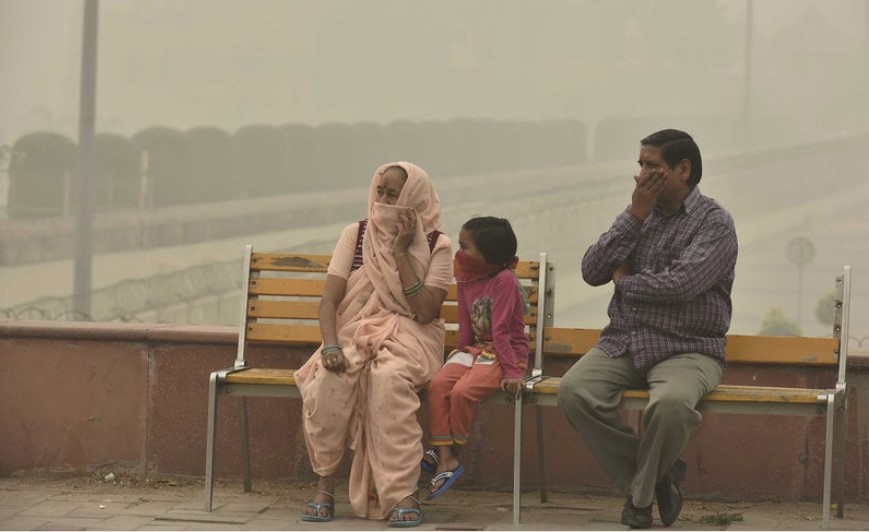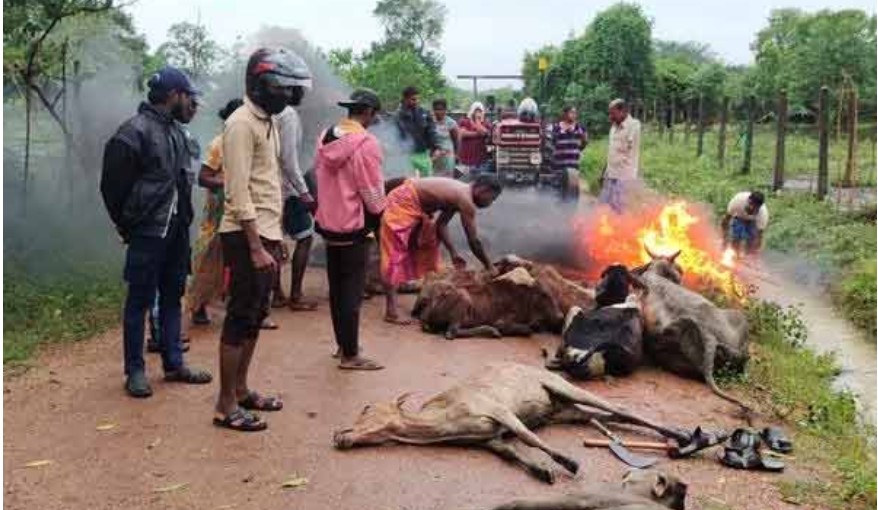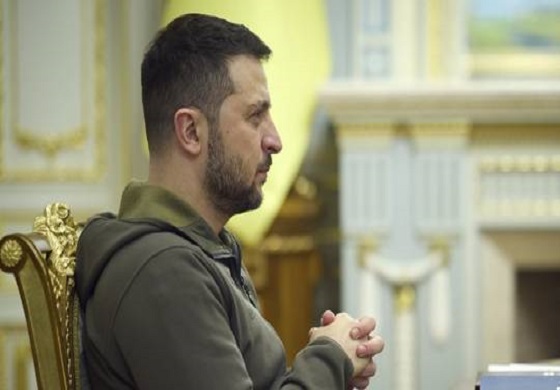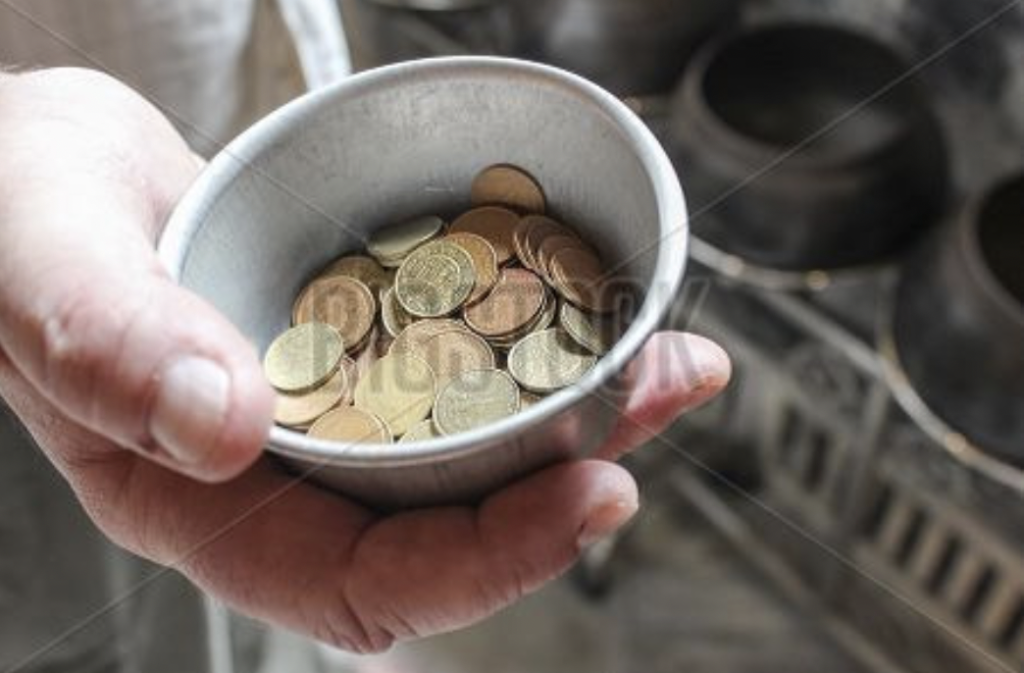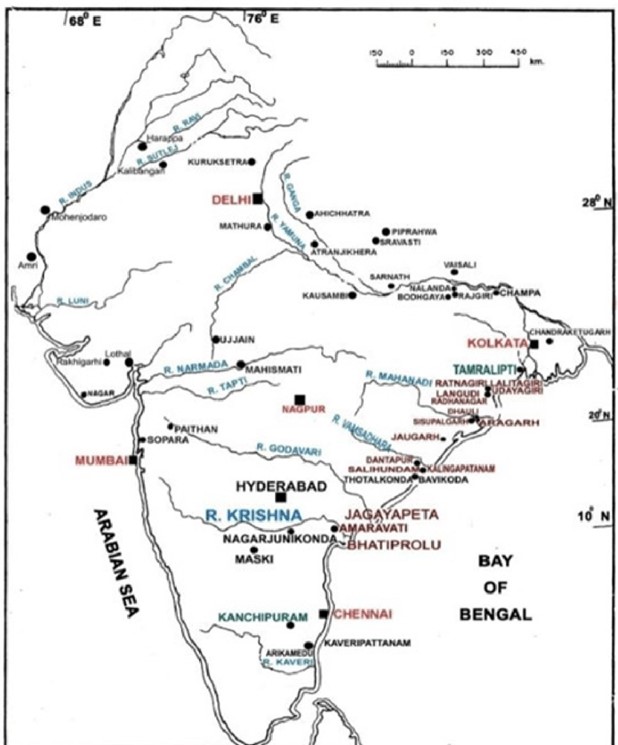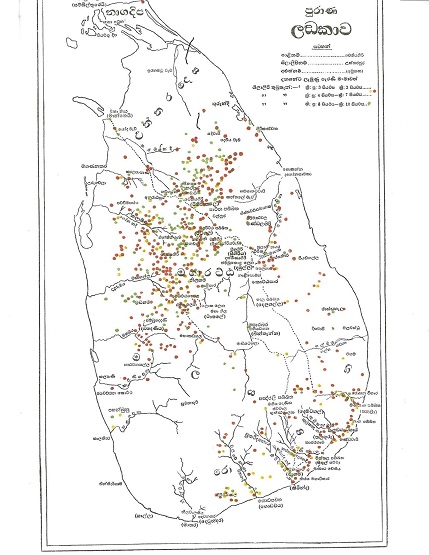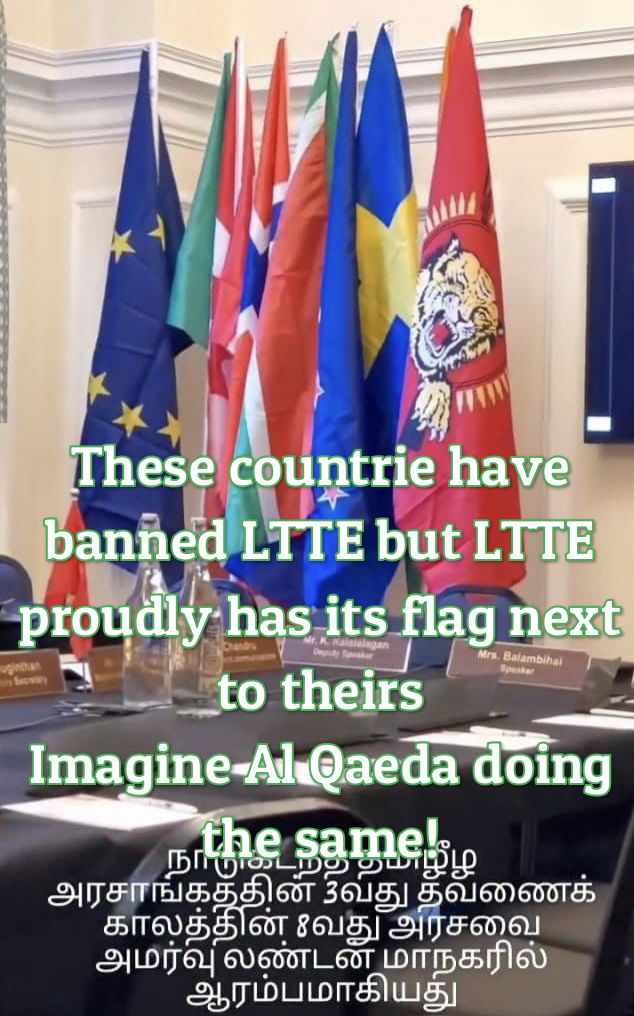චන්දෙන් පැරදුන අගමැති කෙනෙක් අරලිය ගහ මැදුරෙන් පිට වුණේ සූට්කේසයත් අරගෙන
December 12th, 2022උපුල් ගලප්පත්ති
රනිල් වික්රමසිංහගේ නායකත්වයෙන් 2001 දෙසැම්බර් 9 වැනිදා පිහිටවූ එ.ජා.ප. ආණ්ඩුව 2004 අප්රේල් 06 දා කඩා වැටුණේ බෑග් පලහිලව්වක් මුල් කර ගනිමින් ඇරඹි බල අරගලයකින්ය. එදා අගමැති ලෙස රනිල් ආණ්ඩු කරද්දී විධායක ජනාධිපතිකම කළේ චන්ද්රිකා බණ්ඩාරනායක කුමාරතුංගය. ආණ්ඩුව රනිල්ගේ වුවත් පොතේ හැටියට කැබිනට් මණ්ඩලයේ ප්රධානියා වන්නේ ජනපතිවරයාය. එහෙත් ඇය වවුලාගේ මඟුල් ගෙදර ගොස් එල්ලිලා සිටීමට අකමැති වූවාය. රනිල්ගේ එ.ජා.ප. ඇමැති මණ්ඩලයේ ප්රධානත්වය උසුලන්නට ඈ ගියාය. චන්ද්රිකාගේ පැමිණීම එ.ජා.ප. ඇමැතිවරු නොරිස්සුවෝය. කැබිනට් මණ්ඩලයේදී එදා යූ.ඇන්.පී. ඇමැතිවරු චන්ද්රිකා අපහසුතාවට පත් කළේ ඇගේ අත්බෑගයේ අධිතාක්ෂණික කැමරාවක් අටවා කැබිනට් රහස් පිටකරන බවට චෝදනා කරමින්ය. චන්ද්රිකා කැබිනට් මණ්ඩලයට එන සෑම දිනම එ.ජා.ප. ඇමැතිවරු කියා සිටියේ ජනපති චන්ද්රිකාගේ අත්බෑගය පරීක්ෂා කළ යුතු බවය. මෙහි මූලිකයා වූයේ එවකට ඇමැති රවී කරුණානායකය. තම අත්බෑගය පරීක්ෂා කිරීමට ඇය කිසි විටෙක කැමති නොවූවාය. එහි ප්රතිථලය වූයේ ඇමැතිවරුන්ගේ අවලාද විඳ ගැනීමට නොහැකි යැයි කියමින් චන්ද්රිකා කුමාරතුංග කැබිනට් මණ්ඩලය මගහැර සිටීමය.
එකල චන්ද්රිකාගේ ‘මහෞෂධ’ පඬිවරයා වූ මංගල සමරවීරගේ චරිතාපදානය ඇතුළත් ‘ඛේමාගේ කොල්ලා‘ කෘතියේ දැක්වෙන පරිදි අවසානයේ මංගල සමරවීර ඇතුළු චන්ද්රිකා හිතවාදීන් ඇයට යෝජනා කළේ කෙනෙහිලිකම් කරන එ.ජා.ප. ආණ්ඩුවේ අභ්යන්තර කටයුතු, ආරක්ෂක සහ ජනමාධ්ය ඇමැතිකම් පවරාගෙන රනිල්ගේ තටු කැපීමටය. ඉන් නොනැවතුනු චන්ද්රිකා, රනිල්ගේ ආණ්ඩුව විසුරුවා හැර බලය අල්ලාගෙන එක්සත් ජනතා නිදහස් සන්ධාන ආණ්ඩුවක් 2004 දී බිහි කළාය.
චන්ද්රිකාගේ බෑග් හුටපටයට පසු මෙරට වැඩිම කතාබහට ලක්වූ වෙනත් බෑගයක් වී නම් ඒ, යුද හමුදාපති ලුතිතන් ජෙනරාල් විකුම් ලියනගේ විසින් ජනපති රනිල් වික්රමසිංහට ගිය දෙවැනිදා පිරිනැමූ රතු පැහැ බෑගය විය යුතුය. එවැනි ආරක්ෂිත බෑගයක් අවශ්ය වූයේ මෙරට ජනාධිපතිවරයා වශයෙන් සහභාගී වන විදේශ සංචාරයන්හිදී රහස්ය ලිපි ලේඛන ආරක්ෂිතව රැගෙන යාමට නිල බෑගයක් අවශ්ය වීමය. ලෝක නායකයන් විදෙස් ගමන්වලදී මෙවැනි බෑගයක් හෙවත් රතු පෙට්ටියක් භාවිත කිරීම සම්ප්රදායක්ය.
යුද හමුදා වෙබ් අඩවියේ සඳහන් වන ආකාරයට මෙම බෑගය යුද හමුදාපතිවරයාගේ උපදෙස් මත සාදා ඇත්තේ යුද හමුදා විදුලි හා යාන්ත්රික ඉංජිනේරු අධ්යක්ෂ මණ්ඩලයය. මෙම බෑගයේ උසස් නිමාව හා යුද්ධ හමුදාවේ ශිල්පීය දක්ෂතාව, මනාව සැලසුම් කිරීමේ හැකියාව ගැන ජනපතිවරයා ප්රසාදයට පත්වූ බවද යුද හමුදා වෙබ් අඩවියේ සඳහන්ය. ඔවුන් මෙය නිර්මාණය කරන ලද්දේ ජනාධිපති ලේකම් කාර්යාලය විසින් දුන් පිරිවිතරයන්ට අනුව සහ ජාත්යන්තර ප්රමිතීන්ට අනුකූලව බවද සඳහන්ය.
ජනපති රනිල් කොහොමත් බ්රිතාන්යයටත් වඩා වෙස්ට්මිනිස්ටර් සම්ප්රදායට ආසා කරන බව රහසක් නොවේ. හමුදාව සැලියුට් ගහන විට සර් ජෝන් කොතලාවලට පසු පෙරලා සැලියුට් ගහන ලංකාවේ අගමැති, ජනපති කෙනෙක් සිටියේ නම් ඒ රනිල් විතරය.
මින්පෙර පස්වරක් අගමැති වූ රනිල්ට මින් පෙර තමන්ට කියා බෑගයක් හදා ගන්නට කල්පනා කළේ නැත. හදිසියේ ඔහුට මෙවැනි අදහසක් පහළ වූයේ ඇයි දැයි අප ඇසුවේ බෑගයේ නිෂ්පාදන ක්රියාවලිය ජනපති පාර්ශ්වයෙන් සම්බන්ධීකරණය කළ තරුණ කටයුතු සහ තිරසර සංවර්ධනය පිළිබඳ උපදේශක රන්දුල අබේවීරගෙනි.
‘‘මේ වගේ රෙඩ් බෑග් ජේ. ආර්. ජයවර්ධන ජනාධිපති කාලේ ඉඳන් තිබිලා තියෙනවා. ප්රසිඩන්ට් ඩිස්පැච් බොක්ස් කියලා කිව්වෙ ඒකට. කාලයක් යද්දී ඒක නැතිවෙලා ගිහින්. රනිල් වික්රමසිංහ මැතිතුමා තමයි ආපහු මේක අවශ්යයි කියලා හදාගත්තේ.’’
මෙම රතු පෙට්ටි සම්ප්රදාය පළමු වරට ආරම්භ වූ බව සැලකෙන්නේ 16 වැනි සියවසේදී පළමුවන එළිසබෙත් රැජිනගේ නියෝජිත ෆ්රැන්සිස් ත්රොක්මෝර්ටන් විසින් ස්පාඤ්ඤයේ තානාපති බර්නාඩිනෝ ද මෙන්ඩෝසා වෙත රතු පෙට්ටියක පුඩිං බහා යැවීමත් සමගය.
බ්රිතාන්ය සම්ප්රදාය තුළ රැජින විසින් රතු පෙට්ටිය භාවිත කර ඇති අතර, රාජ්ය නිලධාරීන්ගේ රහස්ය ලේඛන යැවීම සඳහා කළු පෙට්ටිද, අගමැතිවරු, අගමැති ලේකම්වරු සහ බුද්ධි අංශ නිලධාරීන් විසින් රතු ඉරි සහිත නිල් පෙට්ටිද, මන්ත්රීවරුන් හෝ ස්ථිර ලේකම්වරුන් විසින් කොළ පැහැ පෙට්ටිද, විපක්ෂ නායකවරුන් බොහෝ විට නිල් පැහැ පෙට්ටිද භාවිත කර ඇත්තේය.
රාජ්ය නායකයන් භාවිත කරන මෙම රතු පෙට්ටි නිෂ්පාදනයේ ලොව නම දිනූ ප්රමුඛතම ආයතන වන්නේ බ්රිතාන්යයේ බැරෝ හෙප්බර්න් සහ ගේල් සමාගම හෝ වික්වාර් සමාගම්ය. බ්රිතාන්ය මෙන්ම ඕස්ට්රේලියානු පාර්ලිමේන්තු පහළ මන්ත්රි මණ්ඩලයේ සාමාජිකයන්ද මේවා භාවිත කළ අතර සැලකිය යුතු කාලයක සිට වෙනත් රටවල රාජ්ය නායකයන් සහ ඇමැතිවරුන්ද මේවා භාවිත කරන්නේය. සිංගප්පූරු අගමැති ලී ක්වාන් යූ තම රාජ්ය පාලනය පුරා මෙවැනි රතු පෙට්ටියක් භාවිත කළ නායකයෙක්ය. එම ලේඛනයට දැන් අලුතෙන් එක්වී ඇත්තේ ජනපති රනිල් වික්රමසිංහය.
අදටත් ලොව පුරා රාජ්ය නායකයන් භාවිත කරන මෙවැනි රතු පෙට්ටි නිපදවනු ලබන්නේ බැරෝ හෙප්බර්න් සහ ගේල් හෝ වික්වර් ඇන්ඩ් කෝ විසින් නිපදවූ මුල් මෝස්ටරයට අනුගතව සුළු වෙනස් කිරීම්වලට යටත්වය. එම මුල් මෝස්තරයට අනුව මෙවැනි රතු පෙට්ටියක සාමාන්ය බර කිලෝග්රෑම් දෙකත්, තුනත් අතර වන අතර, එහි ඇතුළත රිදී පාට හෝ කළු සැටින් රෙද්දෙන් හැඩ ගන්වා ඇත්තේය. මුල් යුගයේදී මෙම පෙට්ටිවල ආකෘතිය තැනීමට යොදා ගත්තේ පයින් ගසේ ලීයෙන්ය. බාහිර ආවරණය ඉහළම ගනයේ සම්වලින් හැඩගැන්වෙන අතර, රැජිනගේ හෝ රාජ්ය නායකයාගේ මුද්රාව (රාජ්ය ලාංඡනය) සටහන් කෙරුණේ රන් වන් පැහැයෙන්ය. අගුළු දැමිය හැකි මෙම පෙට්ටි සඳහා රාජ්ය තාන්ත්රික ගමන් බිමන් ලදී වෙනත් ගමන් මලුවලට වඩා වැඩි ආරක්ෂාවක් මෙන්ම ප්රමුඛතාවක්ද දෙන්නේය.
ජනපති රනිල් වික්රමසිංහ වෙත පිළිගැන්වූ රතු පෙට්ටි ඔහුගෙන් පසු පත්වන වෙනත් ජනාධිපතිවරුන්ටද භාවිත කළ හැකි පරිදි ඉහළ ගුණාත්මක බවින් යුක්තව නිපදවා ඇති බව ජනාධිපති මාධ්ය අංශය නිවේදනය කර තිබිණි. එය එසේ වුවද, බ්රිතාන්ය සම්ප්රදාය වන්නේ එරට රාජ්ය නායකයන් භාවිත කළ රතු පෙට්ටි කලක් ඇවෑමෙන් වෙන්දේසියේ විකිණීමට කටයුතු කිරීමය. ඒ අනුව, අගමැතිනී මාග්රට් තැචර් විසින් භාවිත කළ රතු පෙට්ටිය 2015 වසරේදී වෙන්දේසි කරන ලද අතර එමගින් ලද ආදායම පවුම් 242,500 ක්ය. සුප්රකට බ්රිතාන්ය අගමැතිවරයෙක් වූ වින්ස්ටන් චර්චිල්ගේ රතු පෙට්ටිය වෙන්දේසි වූයේ පවුම් 158,500 කටය. බ්රිතාන්ය සම්ප්රදාය එසේ වුවද ඇමරිකාවේ නම් කෙරෙන්නේ එරට ජනාධිපතිවරයෙක් විශ්රාම යාමේදී ඔහු භාවිත කළ රතු පෙට්ටිය ඔහුටම තෑගි කිරීමය.
මෙවැනි එක් රතු පෙට්ටියක් සාමාන්යයෙන් (බ්රිතාන්යයේදී) පවුම් 1,250 ක් පමණ වන අතර එය ශ්රී ලංකා මුදලින් නම් රුපියල් 559,975 කි. ජනපතිවරයා විසින් ඇණවුම් කොට ලබාගත් රතු පෙට්ටි හතර (04) සඳහා කොතරම් මුදලක් වැය වූයේද යන්න හෙළිවී නැත්තේය.
මින් පෙර ලංකාවේ රාජ්ය නායක කාරකාදීන්ට මෙවැනි විශේෂ බෑග් හදා දී ඇත්තේ යුද හමුදාව හෝ වෙනත් රාජ්ය ආයතනයක් නොවේ. ජනපතිවරුන් මෙවැනි ඕනෑ එපාකම් හදා ගත්තේ ඉහළ තත්ත්වයේ බෑග් නිෂ්පාදනයේ යෙදෙන මෙරට සමාගමක් වන පී.ජී. මාටින් සමාගමෙනි. එහි කළමනාකාර අධ්යක්ෂවරයා වන පී.ජී. නිමලසිරිද ජනපතිවරයාට රතු බෑගය දෙන අවස්ථාවට සහභාගි වන අයුරු දැක්වෙන පින්තූර යුද හමුදා වෙබ් අඩවියේ පළවී තිබිණි. ඒ සමග තිබූ පුවතේ සඳහන්ව තිබුණේ ‘යුද්ධ හමුදාපතිතුමාගේ මගපෙන්වීම හා සෘජු අධීක්ෂණය යටතේ අධ්යක්ෂ ජෙනරාල්, විදුලි හා යාන්ත්රික ඉංජිනේරු අධ්යක්ෂ මේජර් ජෙනරාල් ජේ.ඒ.ආර්.එස්.කේ. ජයසේකරගේ ප්රධානත්වයෙන් යුතුව ක්ෂේත්රයේ ප්රවීණයන් පිරිසක් විසින් ජනපති ලේකම් කාර්යාලය විසින් ලබා දෙන ලද පිරිවිතරයන්ට අනුව මෙම නවීනතම බෑගය උසස් තාක්ෂණයෙන් යුතුව නිමවා තිබිණි’ යනුවෙනි. බළලා මල්ලෙන් එළියට පනින්නේ මෙම ඡේදයෙනි.
‘ක්ෂේත්රයේ ප්රවීණයන්’ යනුවෙන් මේ කියන්නේ පී.ජී. මාටින් සමාගම බවට සැකයක් නැත. අපට දැනගන්නට ලැබී ඇති ආකාරයට ජනපතිට දුන් බෑගය හැදුවේ යුද හමුදාව නොව, පී.ජී. මාටින්ලාය. එහෙත් පී.ජී. මාටින්ලා හැදූ බව නොකියා කොළේ වහන්නේ ඇයිදැයි කියා වැඩිදුර තොරතුරු දැනගැනීමට අප හමුදා ප්රකාශක බ්රිගේඩියර් රවි හේරත්ට කතා කළ විට ‘‘තොරතුරු දෙන්නම්’’ යනුවෙන් කීවා මිසක් ඔහු පුවත්පත මුද්රණයට යන තුරා අපට කතා කළේ නැත.
කෙසේ නමුදු මෙම සමාගමට ජනපතිවරුන්ට බෑග් හැදීම මහලොකු කජ්ජක් නොවේ. ආර්. ප්රේමදාස මෙන්ම මහින්ද රාජපක්ෂ ජනපතිවරුන්ට බෑග් නිෂ්පාදනය කර තිබේ.
එක පාරක් ජනාධිපති ප්රේමදාස ඔහු කෑම ගෙනියන බෑගය කැඩුණු විට එය අලුත්වැඩියා කරන්න එව්වේ පී.ජී. මාටින් සමාගමටය. ඒක හදන්න බැරි මට්ටමටම අබලන් වී තිබුණේ. මේක හදනවට වැඩිය හොඳයි අලුත් එකක් මහන එකයි සමාගම කීය. ඔහු ඊට කැමති විය. ඊට පස්සෙ ජනපති කියපු විදියට බෑගය ෙමහලා දුන්නේ පී.ජී. මාටින් සමාගමය.
මෙරට ජනපතිවරුන්ගෙන් පී.ජී. මාටින් සමාගමට වැඩිම ඇණවුම් ගණනක් ලැබී තිබුණේ ජනපති මහින්ද රාජපක්ෂගෙන්ය.
මහින්ද රාජපක්ෂ ඔහුගේ අව් කණ්ණාඩි දාගෙන යන්න බෑගය වගේම පිටරට යනවිට ගෙනියන ට්රැවලින් බෑග් සේරම වගේ හදා ගත්තේ පී.ජී. මාටින්ලාට කියලාය. තව දවසක් වාහනේ යන කොට අයිපෑඩය තියාගෙන වැඩ කරන්න පුළුවන් රඳවනයක් හදලා දෙන්නැයි ජනපතිවරයාගෙන් ඇණවුමක් ආවේය. සමාගම ජනපතිවරයාගේ සිතැඟි හරි අපූරුවට ඉටුකර දුන්නේය. මේ වගේ බෑගයක් පිටරටකදී නම් ලොකු ගාණක් වන්නේය. ලංකාවෙදි අපේ ශිල්පියෙකුට මේ වගේ බෑගයක් රුපියල් එක්ලක්ෂ පනස් දාහක විතර පිරිවැයකින් මාසෙක විතර කාලෙකදී හදන්නට හැකියාව ඇත්තේය.
රනිල්ගේ රතු පෙට්ටි ගැන කතා කිරීමේදී අපේ සිහියට පළමුව එන්නේ අයවැය රහස් පෙට්ටිය ගැනය. 1977 දී පළමු අයවැය ඉදිරිපත් කළ රොනී ද මැල් මුදල් ඇමැතිවරයා භාවිත කළේ ලීයෙන් තැනූ රහස් පෙට්ටියක්ය. මේ අයවැය රහස් ඇතුළත් රතු පෙට්ටිය ලෝකයට මුලින්ම හඳුන්වා දෙනු ලැබුයේ 1852 දී බ්රිතාන්ය චාන්සලර් (මුදල් ඇමැති) විලියම් ග්ලැඩ්ස්ටන් විසින්ය. එය 2000 වසරෙන් පසු ලංකාවේ කිසිදු මුදල් ඇමැතිවරයෙක් විසින් අයවැය පෙට්ටි භාවිත නොකළේය. ජනාධිපති කාර්යාල ප්රකාශකයෙක් අප සමග පැවසුවේ රොනී ද මැල් විසින් භාවිත කළ අයවැය රහස් පෙට්ටිය අලුත් වැඩියා කර මේ වන විට මුදල් අමාත්යාංශයට ලැබී ඇති අතර, ඉදිරියේදී එය භාවිතයට ගන්නා බවය.
රටේ ජනතාව නොදැන ගත්තාට මෙරට ජනාධිපතිවරයාට කළු පෙට්ටියක් (බ්ලැක් බොක්ස්) නිතිපතා ලැබෙන්නේය. එය විවෘත කිරීම සඳහා වන යතුරු දෙකෙන් එකක් ඇත්තේ ජනාධිපතිවරයා සන්තකයේ පමණය. අනෙක ඇත්තේ රාජ්ය බුද්ධි අංශයේ අධ්යක්ෂවරයා අතේය. ඒ බව වරක් ප්රකාශ කළේ රාජ්ය බුද්ධි සේවයේ අධ්යක්ෂවරයකු වූ හිටපු ජ්යෙෂ්ඨ නියෝජ්ය පොලිස්පති චන්ද්රා නිමල් වාකිෂ්ඨය. මෙම කළු පෙට්ටියේ එන්නේ රටේ දෛනික ආරක්ෂක තත්ත්ව වාර්තාවය. රටේ දෛනික ආරක්ෂක තත්ත්වය පිළිබඳ රටේ නායකයා දැනුවත් වන්නේ එම වාර්තාවෙන්ය.
රාජ්ය නායකයන් භාවිතයට ගන්නා බෑග් ගැන කතා කිරීමේදී මතකයට එන්නේ කතා ගොන්නක්ය. අගමැතිවරුන් හත් දෙනෙකුගේ ලේකම්වරයෙක් ලෙස කටයුතු කළ බ්රැඩ්මන් වීරකෝන් විසින් රචිත ‘අරලියගහ මැදුරේ ස්පන්දනය’ පොතේ අගමැති ඩබ්ලිව්. දහනායකගේ සූට්කේස් දෙකක් ගැන සඳහන්ය. අගමැතිකම ලැබූ මොහොතේ ඔහු අරලියගහ මැදුරේ පදිංචියට ආවේ සූට්කේස් දෙකක් උස්සාගෙනය. හැටේ මාර්තු මහ ඡන්දයෙන් පැරදී ගෙදර යන්නට අරලිය මැදුරේ කොරිඩෝරයේ එදා ගෙනා කසිකබල් සූට් කේස් දෙකම උස්සාගෙන සිටින දහනායක දුටු තමාට කනගාටුවත් දැනුණු බව බ්රැඩ්මන් වීරකෝන් සිය කෘතියේ සඳහන් කර ඇත්තේය.
අරලියගහ මැදුරට ආපු විලසින්ම ආපහු ගිය දහනායකගේ කසිකබල් සූට්කේස් දෙකින් කියැවෙන්නේ එදවස දේශපාලනඥයන්ගේ සරලකමය. සොරකම් නොකළ පිරිසිදු දේශපාලනයේ කතාවය. කෙසේ නමුදු මේ හැම බෑගයටම වඩා වෙනස් බෑග් රැසක් ලොව පුරා රාජ්ය නායකයන්ගේ ගමන් බිමන්වලදී දැක ගත හැකිය.
එවැනි එක් ගමන් බෑගයක් වන්නේ, බැලස්ටික් බ්රීෆ්කේස් (Ballistic Briefcase ) ය. රාජ්ය නායකයෙකු හෝ සුවිශේෂී පුද්ගලයෙකු ජනතාව අතරින් රැඟෙන යාමේදී ඔහු දෙපසින් යන ආරක්ෂකයන් අත ඇත්තේ මෙවැනි බෑග්ය. බෑගයක් කීවාට එය බෑගයක්ම නොවේ. බෑගයක් ලෙස නවා එහි ඇත්තේ රාජ්ය නායකයාට වෙඩි තැබීමක් වුවහොත් ක්ෂණිකව දිග හැර ඔහු ආවරණය කර ගත හැකි වෙඩි නොවදින ආවරණයක්ය. මෙවැනි බැලස්ටික් බ්රීෆ්කේස් වැඩි වශයෙන් ඉන්දීය අගමැති මෝදි ගමන් කරද්දී හතර වටේට භාවිත කෙරේ. මෙරට නායකයන් හා හමුදා ප්රධානීන්ගේ ආරක්ෂකයන් සතුවද මෙවැනි බෑග් ඇත්තේය.
ඇමරිකානු ජනාධිපතිවරයා යන සෑම තැනම ඔහු පසුපසින් යන හමුදා නිලධාරියකු විසින් විශාල කළු ගමන් බෑගයක් රැගෙන යන අතර එය නම් කොට ඇත්තේ ‘න්යෂ්ටික පාපන්දු බෑගය‘ හෙවත් Nuclear Football Briefcase ලෙසය. ඇමරිකානු ජනපතිවරයා වටා ගෙතුණු ක්රියාදාම චිත්රපටවලදී මෙවැනි බෑග්වල කතා වරදින්නේ නැත.
ඇමරිකානු ජනාධිපතිවරයාගේ න්යෂ්ටික පාපන්දු බෑගයේ ඇත්තේ ඇමරිකාව සතු 1,365 ක්වූ දිගු දුර මිසයිල පද්ධතිය සක්රිය කිරීම සඳහා සිය රහස් කේතය ඇතුළු කළ හැකි පරිගණක පද්ධතියක්ය. ඇමරිකානු ජනාධිපතිවරයෙකුට මෙවැනි න්යෂ්ටික පාපන්දු බෑග් තුනක් ඇති අතර, ඔහු සමග තැනින් තැනට ගෙන යන්නේ ඒවායින් එකක්ය. මෙවැනි ගමන් මලු රුසියානු ජනාධිපති ව්ලැද්මියර් පුටිං සමග ද ගමන් ගන්නා බව නිරීක්ෂණය වන්නේය.
මීළඟ ගැටලුව රනිල් වික්රමසිංහ ජනපතිවරයා රාජ්ය තාන්ත්රික ගමන් බිමන් සඳහා තනවා ගත් අභිනව රතු පෙට්ටිවල බහාගෙන විදෙස් රටවලට ඔහු ගෙන යනු ඇත්තේ කුමක්ද යන්නය.
එය බොහෝ විට ශ්රී ලංකාව අද පත්ව ඇති තත්ත්වයෙන් මිදීමට විදෙස් ණය හෝ ආධාර ඉල්ලා කරනු ලබන ආයාචනා ඇතුළත් ලිපිගොනු වෙන්නට බැරිකමක් නැත. මෙරට දරුවන්ගේ මන්ද පෝෂණය, රටේ ජනතාවට ඇති ආහාර අහේනිය මෙන්ම රට පත්ව ඇති අභාග්ය සම්පන්න ඉරණම ලෝක බැංකුව මෙන්ම දියුණු රාජ්යවල නායකයන්ට තහවුරු කිරීම සඳහා වන සංඛ්යා ලේඛන මෙම රතු බෑගයේ දමාගෙන යාමට ඔහුට සිදුවනු නියතය.
එසේ රැගෙන යන්නේ එවැනි තොරතුරු නම් ඒවා අපට පමණක් නොව ලෝකයටද අද රහසක් නොවන බව නම් කිව යුතුමය. අප බංකොලොත් බව දැන් මුළු ලෝකයම දන්නේය. ඒ ගැන හංගන්න දෙයක් නැත.
උපුල් ගලප්පත්ති

